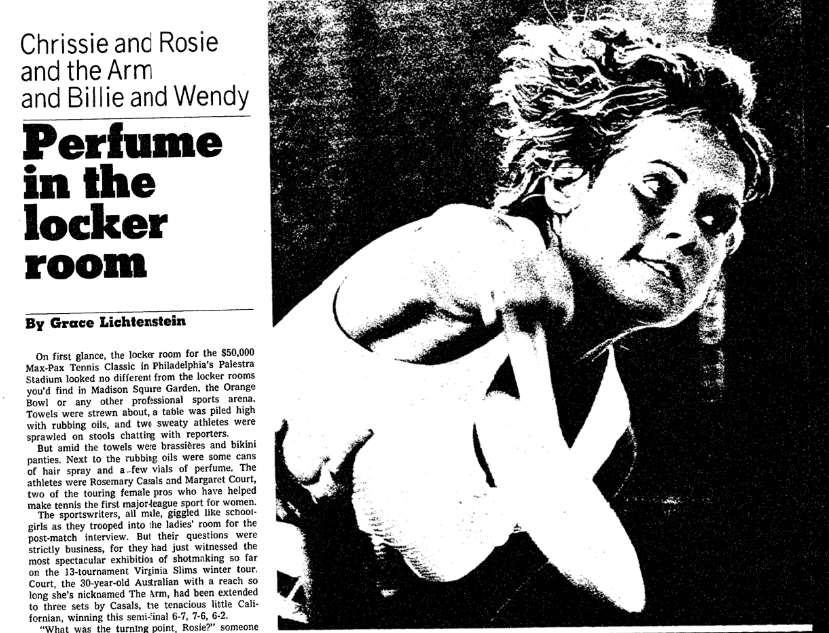The rapid growth of women’s tennis was about more than sport. Everybody knew that. The burgeoning Virginia Slims tour was dubbed “women’s lob.” Equal prize money, once unthinkable, was now a proposition that had to be taken seriously. Whatever Bobby Riggs might have to say about it, these ladies were damn good athletes, and their prominence had ripple effects across the culture.
It wasn’t just die-hard fans who wanted to know more. Press coverage of tennis had always tended toward the matter-of-fact: A recap of a notable match or two–usually between men–followed by a long list of results in microscopic print. Only in the 1960s did newspapers begin to venture the occasional feature story about a rising star or local hero of the courts. Diligent readers would learn that Margaret Court was a mother and that Chris Evert wore pigtails, but not much else.
An article in the May 27, 1973 New York Times Magazine was one of the first efforts to turn women’s tennis stars into multi-dimensional characters. Baseball had Jim Bouton’s 1970 tell-all, Ball Four, and Sports Illustrated employed a team of adventurous journalists filing features about football, basketball, and even–occasionally–men’s tennis. Grace Lichtenstein’s piece for the Times, “Perfume in the locker room,” did the same for the Slims.
Lichtenstein took the reader into the locker room after the final of the Max-Pax Classic in Philadelphia, where Rosie Casals puffed a cigarette and Court sipped a beer. She described life on the road, where players stayed with local families and some–like newcomer Martina Navratilova–struggled with the temptations of fast food.
It was easy to see athletes as a single movement. But as the article was quick to point out, “The players themselves were thoroughly individualistic.” They “never seemed to forget their dual roles as women and athletes,” even if each one handled the balance differently. The young Evert claimed, “No point is worth falling down over,” and she never took the court without makeup. Evonne Goolagong, on the other hand, earned the respect of her male colleagues with a different sort of attitude. One of them said, “she’s the only one [of the women] who wears a jock.” It was a compliment.
In this first major effort, Lichtenstein had to grapple with the relationship between the men’s and women’s games. But as she expanded the article to a season-chronicling book, A long way, baby: Behind the scenes in women’s tennis, the men–apart from husbands, boyfriends, and hangers-on–increasingly disappeared from the picture. Women’s tennis could stand alone. It was time for sportswriters to catch up, and Lichtenstein showed the way.
* * *
This post is part of my series about the 1973 season, Battles, Boycotts, and Breakouts. Keep up with the project by checking the TennisAbstract.com front page, which shows an up-to-date Table of Contents after I post each installment.
You can also subscribe to the blog to receive each new post by email:
